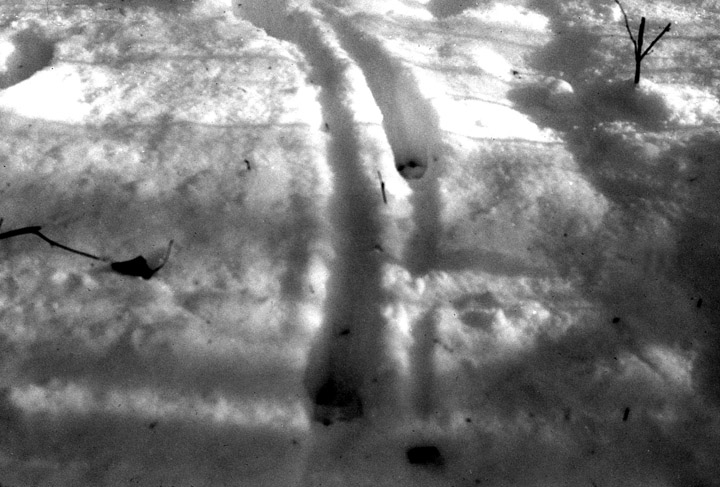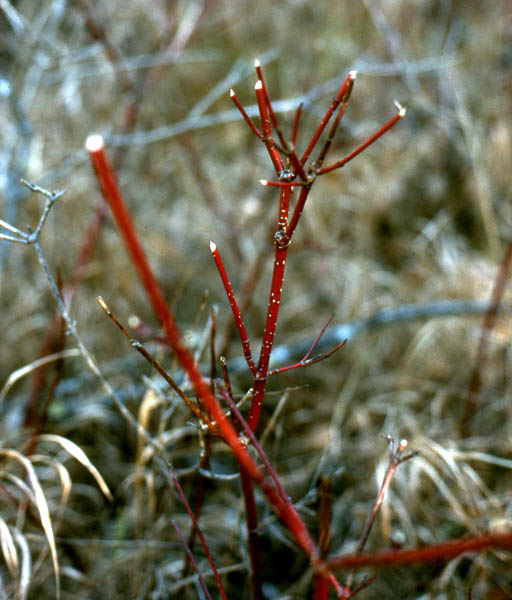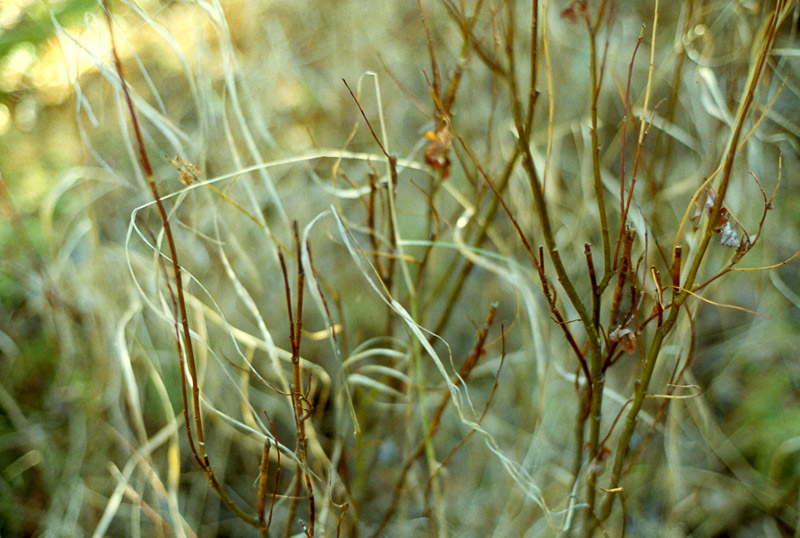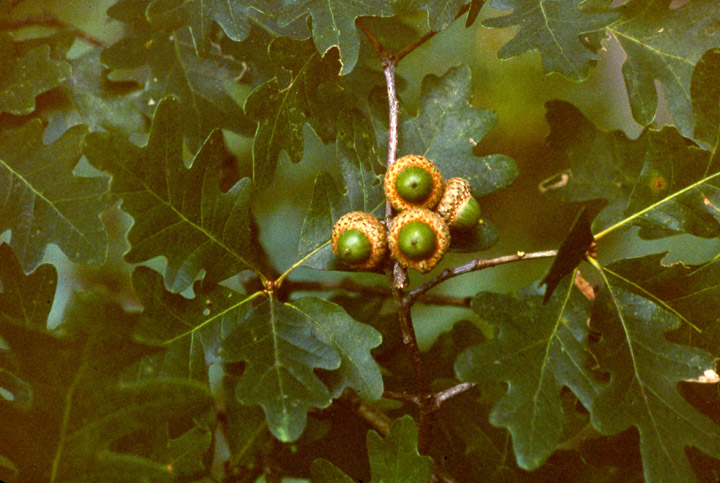Hunting Wolf Country Bucks During The Rut
(Includes tips on does in estrus — does in heat.)
By Dr. Ken Nordberg
[The following is the another of many older articles that will appear on my website. This is article was first published in Midwest Outdoors in February of 2013. Please share what you learn from these articles with your whitetail hunting friends.]

Two dominant bucks settling dispute over doe in heat.
Hunting wolf country bucks is rarely easy while breeding is in progress. The reason is, between November 3, 4 or 5 and November 17, when 85% of northern Minnesota does are bred, only about 10–12% of does are in estrus (in heat and able to conceive) on any one day. Moreover, each doe is only in estrus 24–26 hours (once every 28 days from November through early January until bred (10% bred in mid-December and 5% bred during the last few days of December or early January). Estrus normally begins and repeats among does not bred; while a certain, fairly constant ratio of darkness to sunlight exists from early November through early January.
As most whitetail hunters now know, antlered bucks are strongly attracted to does by a pheromone emitted while does are in estrus, released into the air via their urine. Logically, therefore, the places to hunt antlered bucks while breeding is in progress are the trails and sites currently frequented by does in estrus — feeding areas (each doe has several of them) and watering spots in the morning or evening, for example, and doe bedding areas midday. Theoretically, then, in order to regularly see big bucks while breeding is in progress, all you need is a knowledge of which does in your hunting area are in estrus on any one day. How do you determine that? Since humans cannot detect doe-in-estrus pheromone via our noses, all we can do is look for and recognize deer signs and/or whitetail behavior that reveal when a doe is actually in estrus. Doing this with any degree of accuracy is especially difficult when the ground is not covered with snow. Fresh tracks in snow and a few other signs make it easier to determine where big bucks are currently located, even while does are not in estrus.
Whatever advantages are provided by such knowledge, the presence of gray wolves significantly reduces those advantages. While breeding is in progress in areas where there are no wolves, dominant bucks are not uncommonly spotted throughout daylight hours. The same is true while antlered bucks are renewing ground scrapes, primarily occurring during the two weeks before breeding begins.
In wolf country, most breeding related activities occur only during hours whitetails normally feed. It is not unusual for experienced adult deer of wolf country — including breeding bucks accompanying does in heat — to head to bedding areas by 9 a.m., and wait to begin feeding again until sunset (one-half hour before legal shooting time ends). Needless to say, the most productive periods to hunt mature bucks or any other deer in wolf country are the first legal 2-1/2 hours of the morning and the last one-half hour of the day. All of the five whitetails taken by my hunting partners and I this past November were shot during these specific time periods, including our four mature bucks, two for the wall, one a possible record book buck. We do occasionally take older bucks during other daylight hours, making it wise to hunt during most daylight hours.
Another point to keep in mind is the shortness of a doe's period of estrus. Whenever deer signs or observed behavior indicate a certain doe is in estrus, the hunter should react quickly, either hunting where that doe feeds or is likely to feed (generally the known feeding area nearest the site where revealing signs are discovered) later the same day or the following morning. After that, you are likely to be too late.
Also keep in mind, while one doe is in heat, most other does in your hunting area not. When a big buck is your intended quarry, you can easily waste an entire hunting season by hunting where one or more does not in estrus are currently spending their time. The does you should key on whenever possible are those that are actually in heat.
Okay, now let's consider deer signs that indicated when a doe is in heat. One of the most dependable of such signs is doe urine with spots of blood in it, unlikely to be distinguishable if not on snow. No other whitetail urine has spots of blood in it. Unfrozen doe urine is most fresh and therefore most dependable for keying older bucks. Such urine contains buck-attracting pheromone. Some hunter successfully use such urine as a buck lure. [Doc really jump-started the use of lure & cover scents in the early 1980's by researching and writing about these scents. In the future, you may wish to read — or reread — some of his early articles on scents — as they are added to Doc's Article Archive.] Whenever found, the nearest feeding area is the place to hunt soon the same day or the next morning. Such urine is especially common in doe feeding areas.

Railroad tracks of a buck trailing the scent of a doe-in-heat (in estrus). These tracks are usually travelling upwind into a doe-family-unit's feeding area. (Measure the track size to determine the class of buck.)
Certain deer tracks in snow, namely tracks of an antlered buck under the influence of doe-in-estrus pheromone, are also dependable signs of a doe in heat. Upon getting a whiff of pheromone, whether drifting airborne from some distant site or being emitted directly from a doe, a buck will walk stiff-legged, dragging its hooves from track to track in the snow. Whether buck-sized hooves being dragged from track to track accompany smaller doe-sized tracks or not, the place to stand hunt later the same day or the next morning is the nearest, currently-frequented whitetail feeding area.

Red Osiers — also known as Dogwoods — are a popular browse whitetail deer browse plant. (Notice the evidence of recent whitetail browsing.)

Golden barked Moose Willows are another popular whitetail browse plant. (Notice the evidence of past whitetail browsing.)

Every year, we talk about the acorn crop. Whitetail deer love to eat acorns. Each person in our hunting group has at least one major acorn feeding area in their traditional hunting range. Dave Nordberg even hunts a large hill in our area that has been dubbed, “Acorn Mountain.”
In northern Minnesota a whitetail feeding are in November will likely be an area full of red-barked dogwoods, red suckers of sugar maples, golden-barked moose willows, gray saplings of black ashes and/or black saplings and acorns of of red oaks, tips of stems made white and ragged by browsing deer. Such an area will also have abundant fresh deer droppings and zigzagging, off-trail tracks.

A whitetail buck trail a buck in estrus. Her tail is up. His head is down. A doe in the background is not in heat and is getting zero attention.
It is generally very difficult to decide whether a doe is in heat or not simply by looking at it. If an unalarmed doe's tail remains horizontal, straight back or to one side while the doe is moving about, it may indeed be in heat. Though not often seen or heard, if a doe bleats every now and then while moving about, it also may be in heat. If accompanied by an antlered buck older than a yearling in November, a doe is almost definitely in heat. If an accompanying buck's head is low (neck horizontal), if it seems to be gulping air, wrinkling its upper lip, if its sex organ is partially visible and/or if it walks stiff-legged, the doe is very definitely in heat.
Yes, I know; during many of the last ten or more firearm deer hunting seasons, we've had little or no snow. What should you do then? Do what we Nordbergs do: change stand sites every half day, with each new stand site within easy shooting distance of very fresh, adult-buck-sized tracks and/or droppings within or about doe feeding areas (where there are a lot of fresh, smaller tracks and droppings). Use a backpacked stool to sit a ground level and sit behind natural, unaltered blinds or blinds made from branches lying in the area, placed in front of a fairly solid, natural background to mask your silhouette. Be sure to wear a camo headnet or mask under your blaze-orange cap. All this can be accomplished with unusual ease and big-buck-class effectiveness, quickly and at any time, anywhere.
Good Luck Hunting,
Doc








